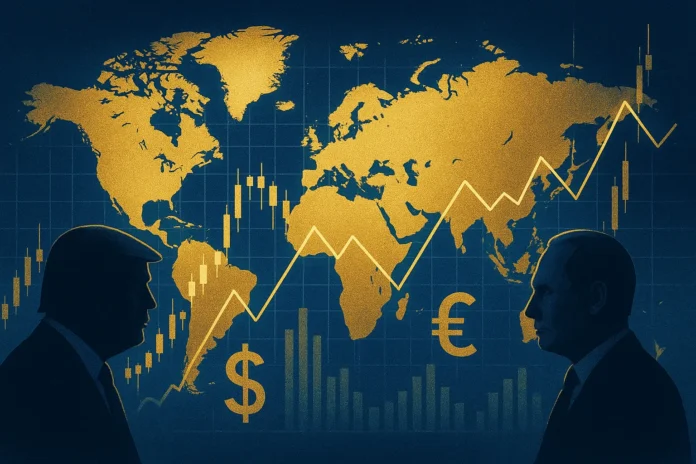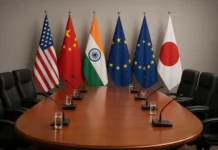Financial markets are often seen as reflections of economic fundamentals, but behind every market movement lies the shadow of global politics. Political tensions, elections, trade policies, and conflicts can dramatically reshape global investor sentiment and capital flow. From the corridors of Washington to Beijing, political decisions have the power to move trillions in global assets.
This in-depth report examines how geopolitical forces influence financial markets, explaining key triggers, market reactions, and long-term effects on global economic stability.
Political Stability as a Market Pillar
The backbone of strong financial performance is political stability. Countries with consistent policies and governance structures attract both domestic and foreign investors.
Conversely, political unrest, leadership crises, or corruption scandals often trigger market volatility and currency depreciation.
For example, the Brexit referendum (2016) sent shockwaves across Europe, erasing nearly $2 trillion in global equity value within days. Similarly, uncertain leadership in developing economies has historically led to capital flight and declining investor trust.
Trade Wars and Global Supply Chains
Trade policies are one of the most direct ways in which politics shape markets. The U.S.–China trade war from 2018 to 2020 demonstrated how tariffs can disrupt entire supply chains, raise costs, and depress market sentiment worldwide.
Announcements of tariffs or trade negotiations now instantly move stock indices and commodities. Investors closely monitor diplomatic language — a positive statement can boost confidence, while threats of new tariffs can trigger sell-offs.
Safe-haven assets like the Japanese yen and Swiss franc often strengthen during such uncertain periods.
Energy Politics and Market Volatility
Energy prices are deeply intertwined with geopolitics. Conflicts or sanctions affecting oil-producing nations can cause immediate spikes in crude prices.
The Russia–Ukraine war in 2022 is a clear example: sanctions and disrupted supply chains pushed oil prices to record highs and triggered inflation across global economies. Similarly, decisions by OPEC+ have direct consequences on market stability, interest rates, and inflation forecasts.
For investors, understanding energy geopolitics is crucial in predicting commodity-driven inflation cycles.
Sanctions, Conflicts, and Investor Behavior
Geopolitical conflicts and sanctions have a cascading impact on markets. When sanctions are imposed, investors typically shift toward low-risk assets such as gold, U.S. Treasuries, and defensive stocks.
The freezing of Russian assets in 2022, for instance, led to losses for European banks and heightened the perception of regional financial risk. Military tensions in the Middle East or the South China Sea produce similar effects, highlighting the link between security events and global capital flows.
Elections and Policy Shifts
Elections represent a period of uncertainty that markets closely watch. Investors try to predict whether a new administration will favor fiscal stimulus, deregulation, or higher taxes.
Unexpected outcomes — such as the 2016 U.S. presidential election or India’s 2019 re-election results — have both caused temporary volatility and reshaped long-term investment strategies.
Markets crave policy predictability, and post-election rallies or sell-offs often depend on how credible and stable the new leadership appears.
Global Alliances and Institutional Influence
Organizations like the IMF, World Bank, and WTO play a stabilizing role in global markets. IMF loans and structural support restore investor confidence in debt-ridden nations, while breakdowns in multilateral cooperation often fuel financial anxiety.
Geopolitical alliances such as NATO or ASEAN also affect market behavior — not directly through policy, but by influencing security and trade expectations. A strong alliance structure usually translates into economic confidence, while diplomatic fractures reduce cross-border capital mobility.
The Rise of Tech Geopolitics
In the 21st century, geopolitical competition has extended beyond borders — into technology and data sovereignty. The U.S.–China competition over AI, semiconductors, and cybersecurity has become one of the most market-moving forces.
When the U.S. restricted chip exports to China in 2023, semiconductor stocks across Asia dropped sharply. Markets now treat tech policy announcements as geopolitical events with real financial consequences.
As nations build digital independence, “tech wars” may become a defining feature of future market risk.
Investor Strategy Amid Geopolitical Risks
Sophisticated investors integrate political analysis into financial models. Tools like geopolitical risk indices (GPR), scenario simulations, and policy forecasting are now standard in portfolio management.
Diversification, exposure hedging, and strategic allocation to defensive assets are common methods to manage these uncertainties. As the world becomes more interlinked, ignoring geopolitics could mean overlooking one of the most powerful drivers of modern markets.
Conclusion
Global politics will continue to redefine the way markets behave. Whether it’s elections, trade tensions, or digital sovereignty, every policy decision echoes across financial systems.
In the modern world, understanding political risk is no longer optional — it’s essential for smart investing. The connection between geopolitics and financial markets is not a trend; it’s a structural reality that shapes the global economy of tomorrow.




